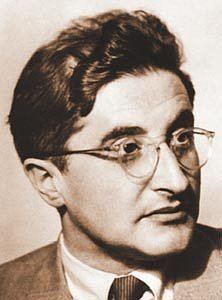Name George Placzek | Role Physicist | |
 | ||
Died October 9, 1955, Zurich, Switzerland Awards Guggenheim Fellowship for Natural Sciences, US & Canada | ||
Hans Bethe - Second trip to Rome: getting to know George Placzek and Edward Teller (36/158)
George Placzek (native name: Georg Placzek) (September 26, 1905 – October 9, 1955) was a Czech physicist.

Born in Brno, Moravia, then part of Austria-Hungary, to a wealthy Jewish family. Placzek studied physics in Prague and Vienna. He worked with Hans Bethe, Edward Teller, Rudolf Peierls, Werner Heisenberg, Victor Weisskopf, Enrico Fermi, Niels Bohr, Lev Landau, Edoardo Amaldi, Emilio Segrè, Leon van Hove and many other prominent physicists of his time. His wife, Els Placzek (née Andriesse) was an ex-wife of physicist Hans von Halban.
Placzek's major areas of scientific work involved a fundamental theory of Raman scattering, molecular spectroscopy in gases and liquids, neutron physics and mathematical physics. Together with Otto Frisch, he suggested a direct experimental proof of nuclear fission. Together with Niels Bohr and others, he was instrumental in clarifying the role of Uranium 235 for the possibility of nuclear chain reaction.
During his stay in Landau's circle in Kharkiv around 1937, Placzek witnessed the brutal reality of Joseph Stalin's regime. His first-hand experience of this influenced the political opinions of his close friends, in particular, fathers of nuclear and thermonuclear bombs, Robert Oppenheimer and Edward Teller.
Later, Placzek was the only Czech with a leading position in the Manhattan project, where he worked from 1943 till 1946 as a member of the British Mission; first in Canada as the leader of a theoretical division at the Montreal Laboratory and then (since May 1945) in Los Alamos, later replacing his friend Hans Bethe as the leader of the theoretical group. Since 1948, Placzek was a member of the Institute for Advanced Study in Princeton, USA.
Placzek's premature death in Zurich produced rumors about his possible suicide influenced by his long-time serious illness. The rumors were based on the theory that suicide-proneness is genetically predisposed, whereas there were five or six suicides within three generations of Placzeks.
Recently, many new facts about George Placzek and his family roots emerged in connection with a Symposium held in Placzek's memory.
